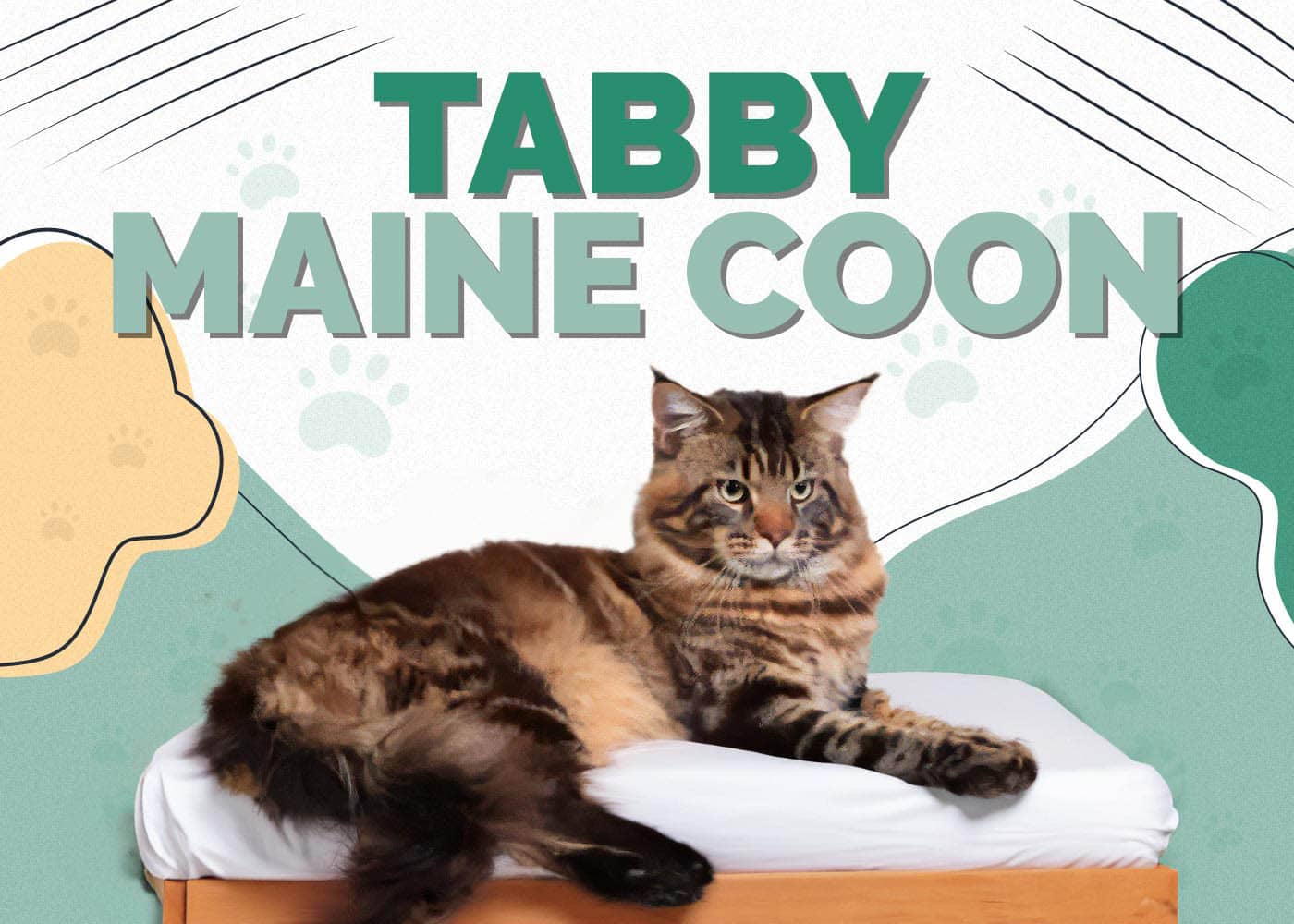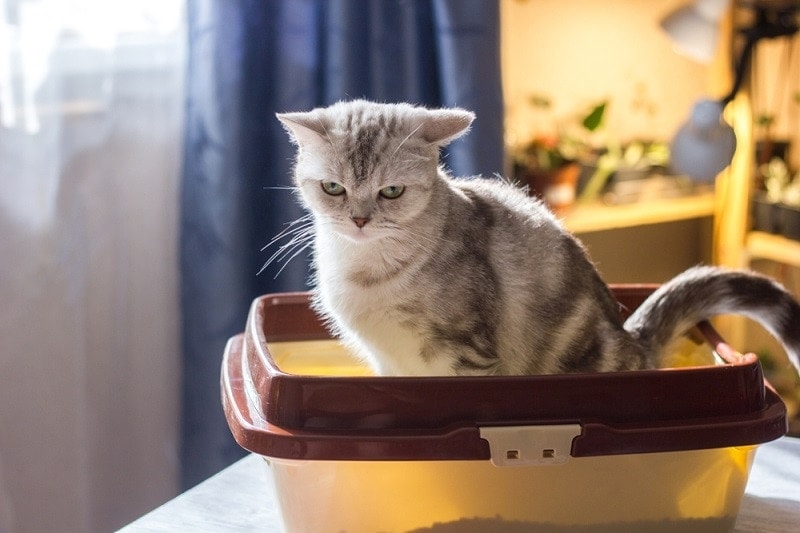Why Do Cats Wag Their Tails? 5 Vet-Reviewed Reasons
By Oliver Jones
Updated on
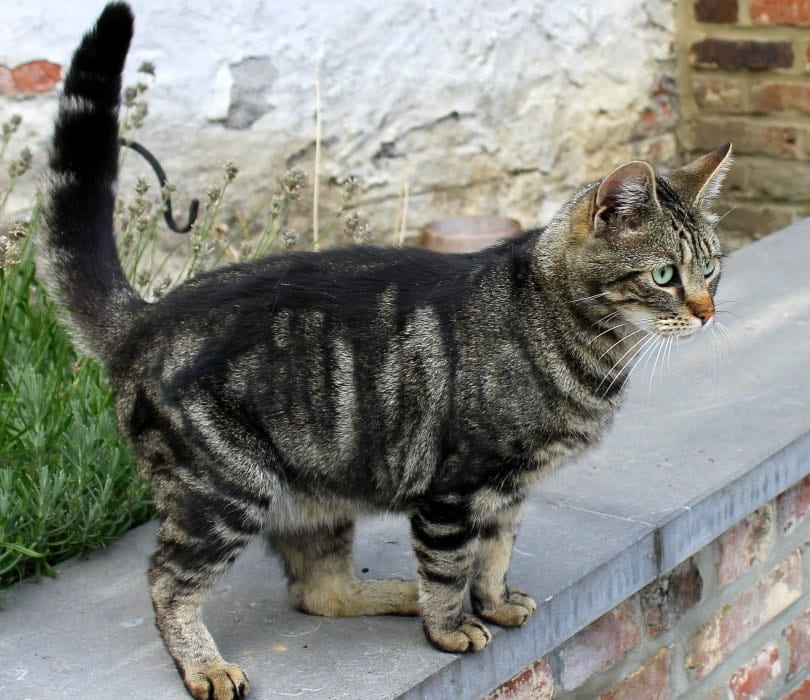
Most everyone knows that dogs enthusiastically wag their tails to show that they are happy. But what’s the deal with cats? If you’re wondering why cats partake in tail wagging, you’re not alone, and we’re here to help you get it straight!
Cats wag their tails for many reasons, and almost all cats engage in the behavior. Tail wagging for cats is a form of body language to express their mental and emotional state. Here are some of the main reasons cats wag those gorgeous tails of theirs!
The 5 Possible Reasons Why Cats Wag Their Tails
1. The Cat Feels Confident
Surely, you’ve seen your cat or someone else’s cat proudly walking down the street with their tail standing straight up with the tip wagging. This is a sign of confidence and that the cat is ready to meet and interact with you or other cats or family pets.
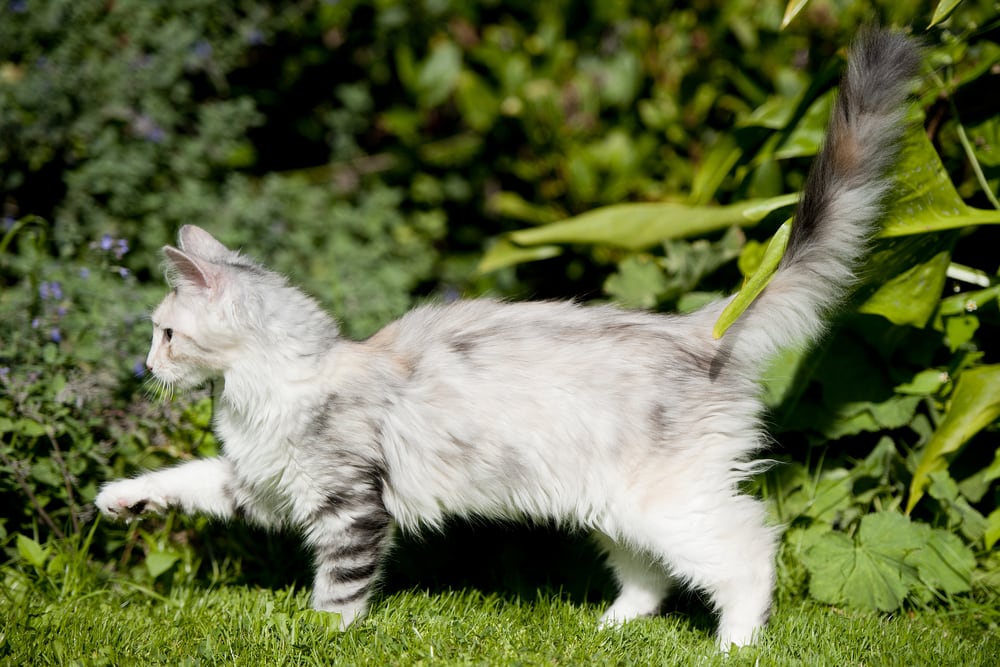
2. The Cat is Afraid
Some cats wag their tails back and forth when they’re afraid of something. A cat that’s feeling afraid may wag their tail close to the ground, or they might even hide the tail under their body. This is a clear sign that the cat doesn’t want to interact with anyone or anything nor engage in any type of fight.
On the other end of the spectrum, a cat that is afraid but willing to fight may hold their tail up straight while arching their back. The tail may fluff up to appear bigger and wag back and forth to warn an approaching threat to stand back.
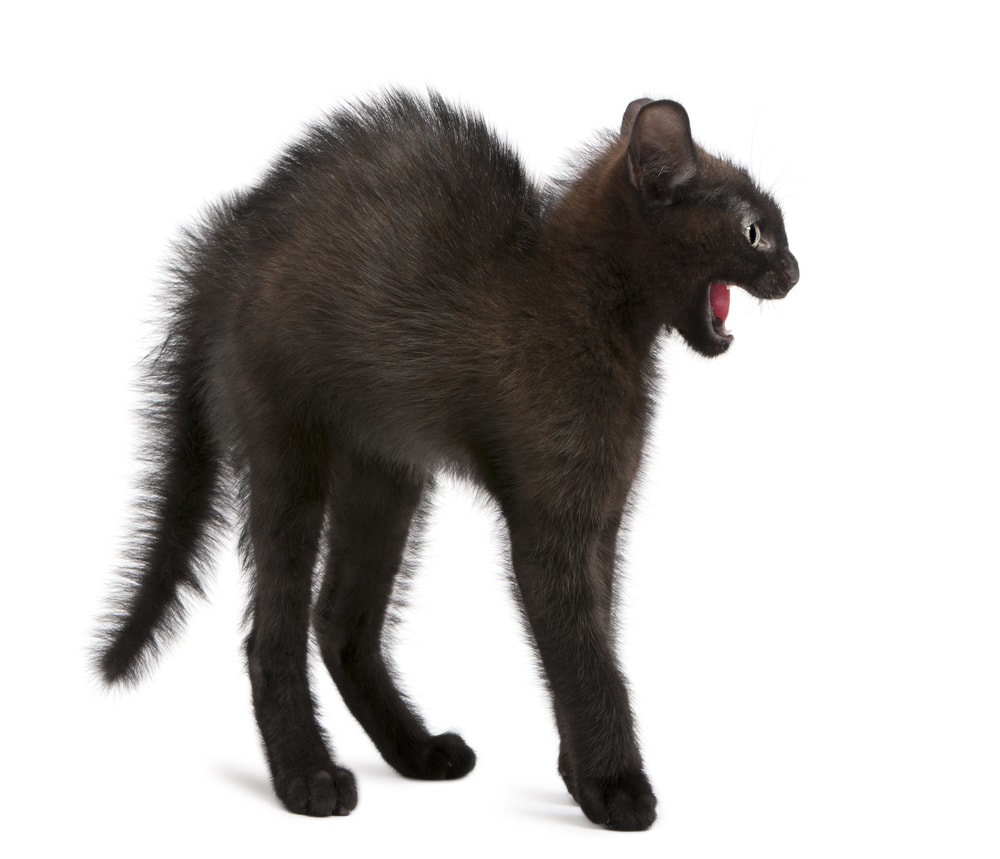
3. The Cat is Excited
The next time you see your cat’s tail standing straight up and quivering a bit, it’s a sign your cat is excited. Maybe you just opened a yummy can of cat food or returned home after being away all day. This type of tail wagging may also be seen when a cat is peeing or when marking their territory. In this case, the cat will back up to an object, shake their erect tail, and relieve themselves.
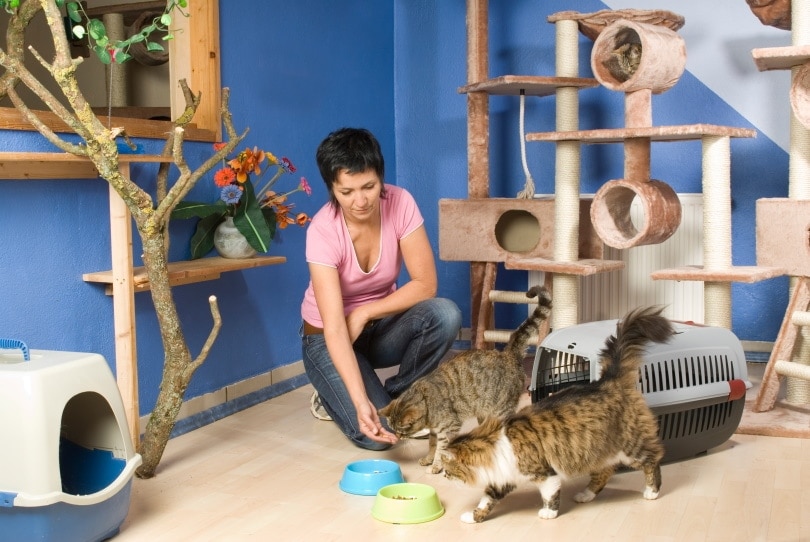
4. The Cat Might Be Annoyed
When a cat is feeling annoyed, they will often wag their tail back and forth to let you or another pet know
Annoyed cats can also flick their tail when they are feeling agitated. For example, if you’re petting your cat or brushing their fur, they may get fed up with it all and flick their tail to send you the message to back off.
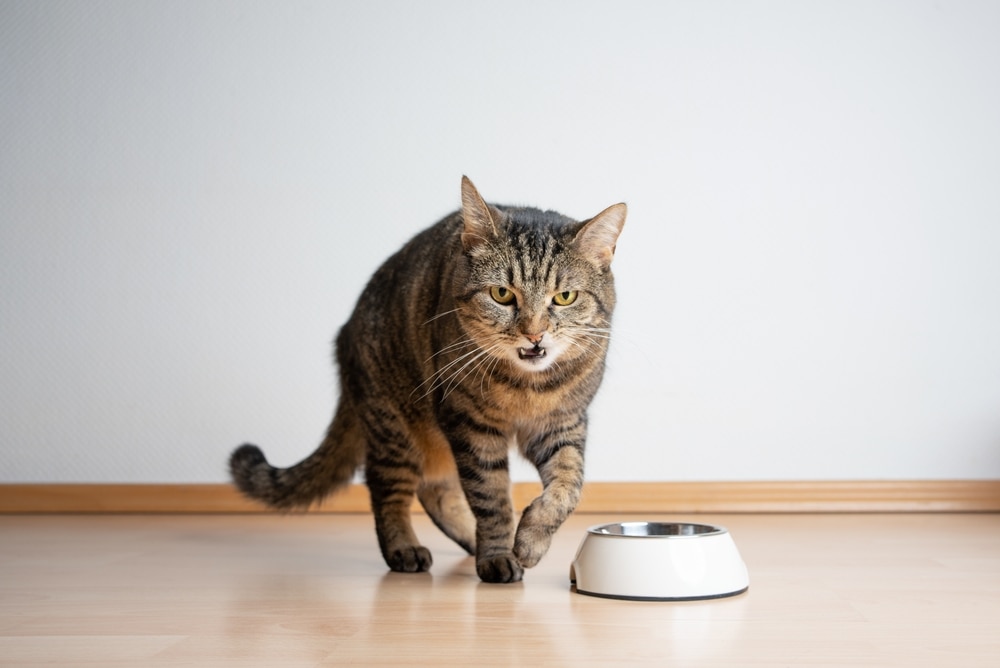
5. The Cat Might be Attentive, In Hunter Mode
When going after prey, cats swish their tails back and forth in an attempt to mesmerize the prey. If you’ve ever watched a cat go after a mouse in the grass, you’ve probably seen the cat’s tail be held straight parallel to the ground and begin swishing back and forth right before they pounce into action to capture the prey.
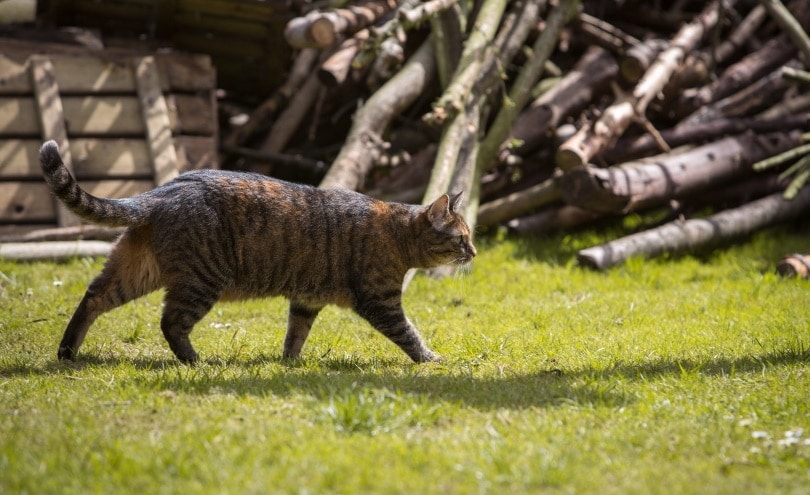
Keeping Your Cat’s Tail Healthy
Considering that cats use their tails to communicate, it’s only natural that you want to help your feline keep their tail healthy and in good shape! When you’re brushing your cat, don’t neglect that long tail. Just remember that most cats don’t like having their tails handled, so proceed with caution.
Carefully and gently brush your cat’s tail to remove any loose hairs. Use a slicker brush for cats that feels gentle on your cat’s fur. If you use a good-quality brush and positive reinforcement methods, your cat may learn to enjoy having their tail brushed so much that they’ll come running whenever you pull out the comb!
If you need a great brush, we recommend the Hepper Cat Brush. This easy-to-use product reliably removes loose hair and knots, and you can clean it with the touch of a button! Try it and you’ll see why this brush is perfect for you and your cat.
- ONE PUSH RELEASE - This kitten brush / cat brush pops out fur with just a simple press, leaving you...
- DURABLE - Cat shedding can be a tough ordeal. Made of resilient ABS plastic and metal bristles with...
If you have an outdoor cat, it’s a good idea to check their tail now and then to ensure it’s free from injuries, inflammation, ticks, or any infection. It’s common for outdoor cats to get into scuffles with other cats and get bitten on the tail. A bite wound can easily become infected, so make the habit of regularly inspecting your cat’s tail carefully. Keep an eye out for burrs and other items that may be entangled in the fur.
Conclusion
Even though they’re somewhat mysterious and aloof, cats have many ways of communicating. They vocalize by meowing and hissing and they show how they feel by positioning their eyes and ears in different ways. Cats also use their tails to communicate how they feel by wagging, vibrating, or swishing their tails back and forth. Keeping an eye on your cat’s tail is a great way to decipher how your cat is feeling!
Looking for more tall tails? Try:
Featured Image Credit: Piqsels





